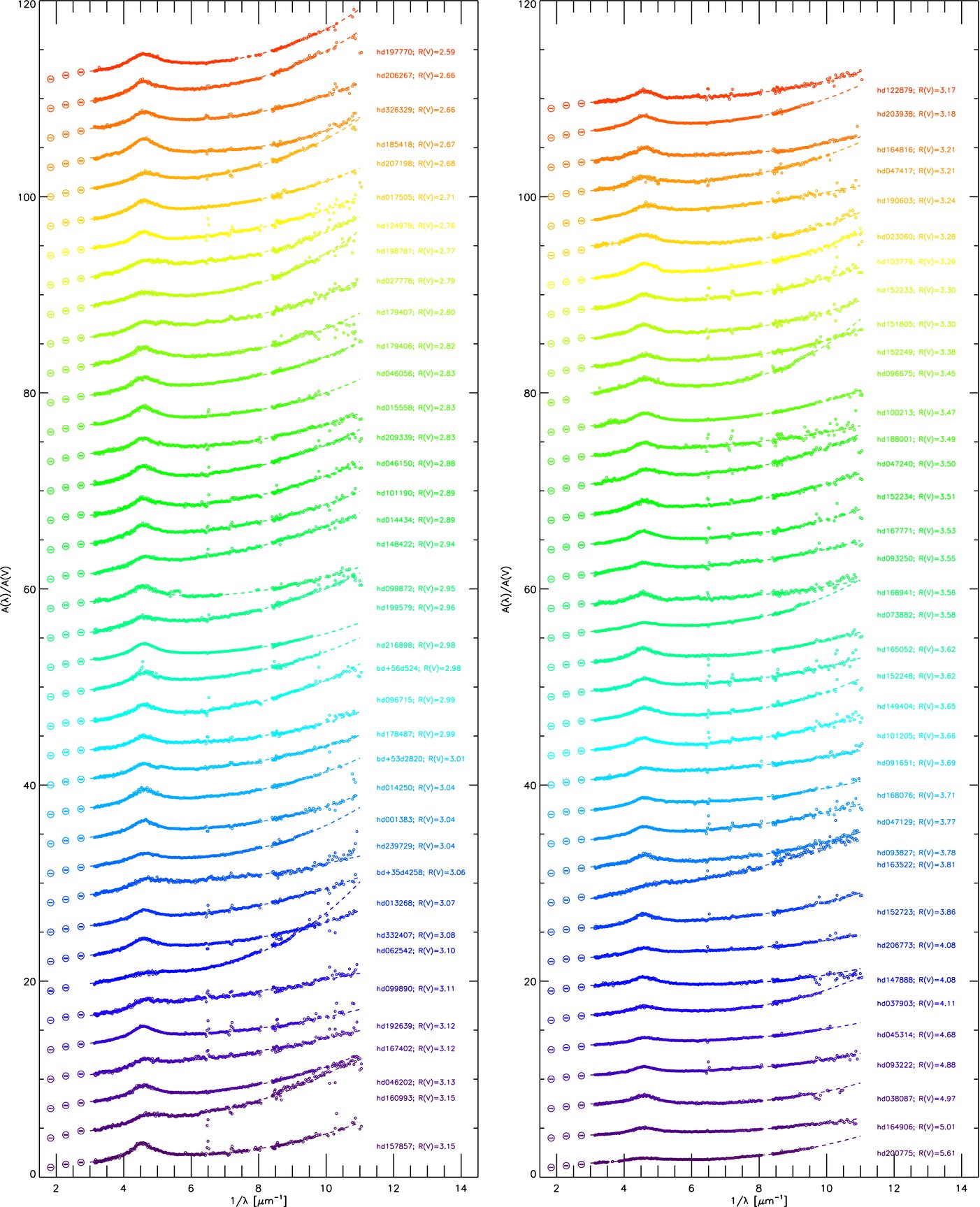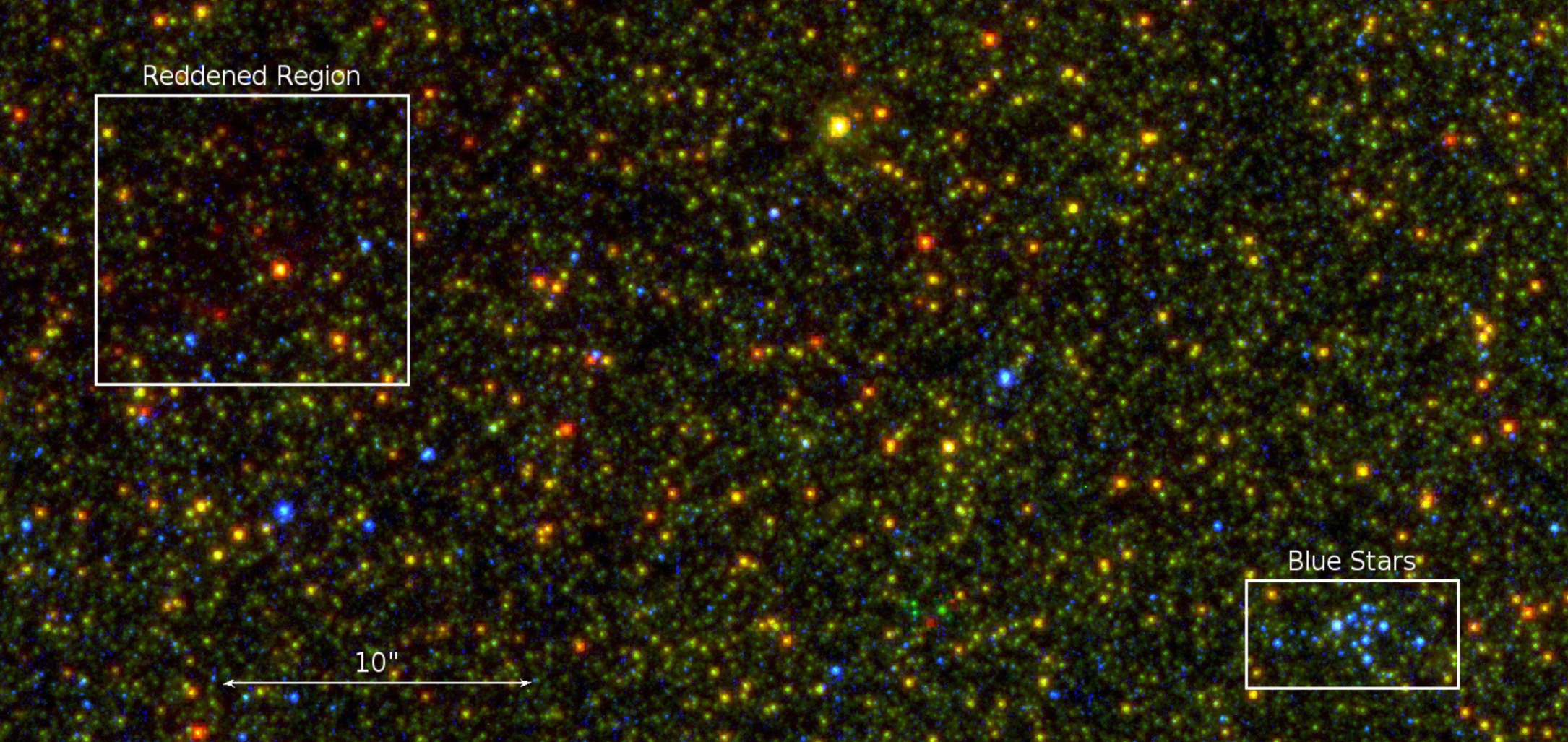Milky Way Extinction
Measurements of dust extinction in our Galaxy provides a rich view of dust grains due to the large number of sightlines with measurements. My work has focused on spectroscopic measurements of extinction to constrain the average behavior and the characteristics of features. I have done this with larger spectroscopic samples in the ultraviolet (Valencic et al. 2004), far-ultraviolet (Gordon et al. 2009), optical (Fitzpatrick et al. 2019; Massa et al. 2020), near-infrared (Decleir et al. 2020), and mid-infrared (Gordon et al. 2021). These results have been used to determine a fully spectroscopic based R(V) extinction relationship that extends from 912 A to 32 micron (Gordon et al. 2023). This relationship provides the average extinction for a range of R(V) values where R(V) traces average dust grain size. This useful relationship is included in the dust_extinction astropy affiliated python package.
We have found two sightlines of particular interest as both do not have a 2175 Å bump - one possibly due to grain destruction (Valencic et al. 2003) and one due to grain coagulation (Whittet et al. 2004)


